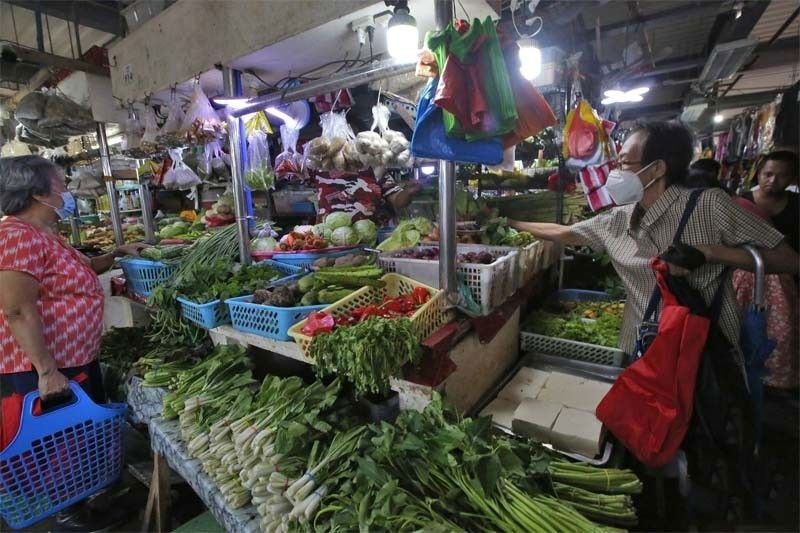Growth target for 2024 narrowed to 6.5 percent 7.5 percent

But think tanks see softer figures
MANILA, Philippines — The economic team of the Marcos administration has turned slightly less optimistic on growth prospects for next year but maintained that the country’s expansion will continue to be among the highest in the region.
In a statement following the186th Cabinet-level Development Budget Coordination Committee (DBCC) meeting late Friday, the economic team reduced its gross domestic product (GDP) assumption to a range of 6.5 percent to 7.5 percent in 2024 from the previous target of 6.5 percent to as much as eight percent set in June.
The DBCC said there remains to be challenges for next year including elevated inflation because of the onset of El Niño, external price pressures from geopolitical tensions and the imposition of export bans in other countries.
Economists earlier warned that the economy could expand at a slower pace next year as elevated interest rates and lagging state spending dampen investments.
Nonetheless, the DBCC maintained that the government is committed to continuing its proactive efforts to sustain the high- growth trajectory of the economy and mitigate the lingering effects of high inflation amid a slower global economic scenario.
“We will strive to implement targeted measures, structural reforms, and strategies that will create a sustainable and future-proof economy for a significant improvement in the quality of life of Filipinos,” the DBCC said.
For this year, the DBCC retained its projection of a six to seven percent GDP growth.
This comes after the 5.5 percent expansion in the three quarters ending September on the back of robust domestic demand and broad-based growth across sectors.
Philippine economic growth accelerated to 7.6 percent in 2022 after emerging from the pandemic-induced recession with a 5.7 percent expansion in 2021 from a contraction of 9.5 percent in 2020.
“The corresponding GDP per capita is above pre-pandemic levels. This growth momentum is expected to continue for the rest of the year and surpass that of our neighboring countries,” the economic team said.
Meanwhile, banking giant Standard Chartered Bank and UK-based think tank Pantheon Macroeconomics expects a slower GDP growth lower than the revised assumptions penned by economic managers.
In a report on the Philippines titled “Descent follows ascent,” Standard Chartered Bank said the country’s output gap may turn slightly negative in the first half of next year and turn neutral towards end-2024.
Standard Chartered chief economist for ASEAN and South Asia Edward Lee, Asia economist Jonathan Koh and Asia rates strategist Anup Ghosh wrote the report on the Philippines in the bank’s Global Focus – Economic Outlook 2024.
“Elevated inflation, tight monetary policy and soft external demand are likely to weigh on growth in H1,” they said.
The British banking giant maintained its gross domestic product (GDP) growth forecast for the Philippines at six percent for 2024 but raised this year’s projection to 5.2 percent from five percent after a better-than-expected expansion in the third quarter.
“However, we expect the pace of expansion in H1-2024 to be moderate as consumers face challenges from elevated inflation. In particular, high prices of food (which may be exacerbated by El Niño effects), transport and electricity could weigh on spending. Additionally, labor market conditions, while robust, may have peaked,” the authors said.
As inflation moderates sustainably in the second half of next year, consumer spending should pick up pace, while remittances from overseas Filipino workers are likely to remain a steady source of support for consumption, they said.
“We see inflation moderating sustainably below four percent in H2, allowing Bangko Sentral ng Pilipinas to start easing monetary policy; this should support growth in H2,” they authors added.
The foreign bank raised its inflation forecasts for the Philippines to six percent from 5.9 percent for this year, 3.8 percent from 3.4 percent for 2024 and 3.5 percent from 2.5 percent for 2025 due to higher electricity, food and transport costs.
The British banking giant expects the BSP Monetary Board to maintain a hawkish monetary policy stance until inflation falls sustainably below four percent starting August next year. It expects a four 25-basis point cuts in the second half of 2024.
“As our expectation of a 25bps rate hike in November 2023 did not materialize, we lower our year-end policy rate forecasts to 6.50 percent in 2023 and 5.50 percent in 2024 from 6.75 percent and 5.75 percent previously, respectively,” they said.
Likewise, Pantheon Macroeconomics sees the GDP growth falling below five percent next year due to weak consumption, below the government’s 6.5 to 7.5 percent target range.
While 2024 will likely mark the end of the synchronized slowdown in economic growth in emerging Asia, Pantheon Macroeconomics chief emerging Asia economist Miguel Chanco and senior Asia economist Moorthy Krshnan said the Philippines, along with Indonesia and India are among those where growth would likely slow further due to the domestic-demand play.
The think tank said in its Emerging Asia Outlook H1 2024 report that the gross domestic product (GDP) growth of the Philippines would slow to less than five percent next year.
“The slowdown in consumption - 75 percent of GDP - has room to run,” the Pantheon economists said.
They pointed out that there has been no progress this year in savings rebuild hit by the global health crisis, in the face of the second-largest inflation squeeze in the region.
Headline inflation eased to a 20-month low of 4.1 percent in November from October’s 4.9 percent amid slower food price increases. This brought average inflation in the January to November period to 6.2 percent, still above the Bangko Sentral ng Pilipinas’ two to four percent target range.
The DBCC now expects inflation to hit the upper end of the earlier target of six percent before easing to the two to four percent target range next year.
Meanwhile, the assumption for the price of Dubai crude oil was narrowed to $82 to $85 per barrel from the $70 to $90 range earlier amid anticipated decline in global oil inventories.
For next year, it is seen settling at $70 to $90 per barrel. By 2025, it is projected to further decline to $65 to $85 per barrel as the latest future prices and forecasts still suggest falling global crude oil prices over the medium term.
On the other hand, DBCC’s peso-dollar exchange rate assumption for this year was adjusted to P55.50 to P56 and will reach P55 to P58 between 2024 and 2028.
The DBCC said the peso would continue to be supported by structural foreign exchange inflows, narrower current account deficit, and ample foreign exchange reserves.
Meanwhile, goods exports and imports growth projections for the year were revised downwards at four percent and three percent respectively, following the trend in near-term global demand outlook and trade prospects.
“For 2024, goods exports growth is supported mainly by the upturn in demand for semiconductors, while goods imports are expected to be propped up by infrastructure investments and increased domestic production capacity,” the DBCC said. — Lawrence Agcaoili, Louella Desiderio
- Latest
- Trending

























